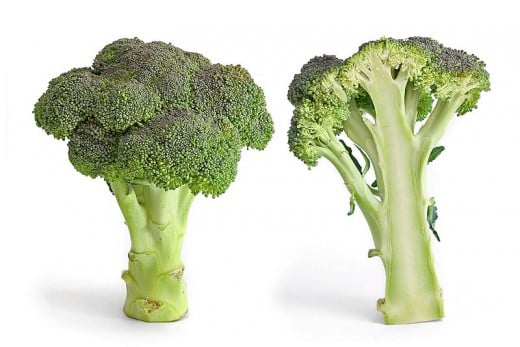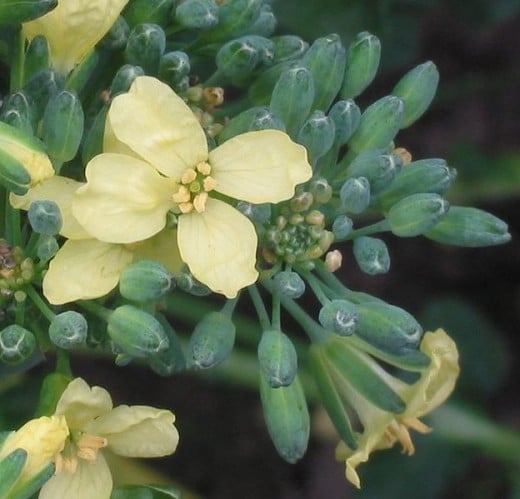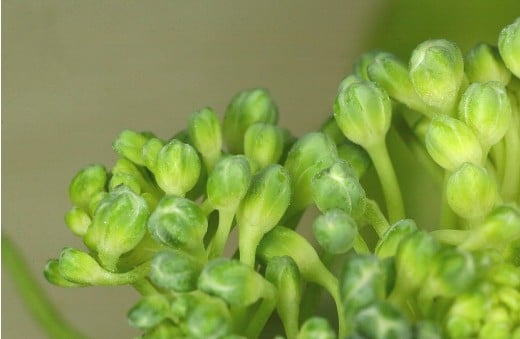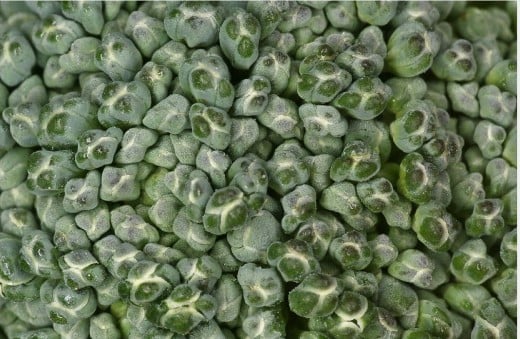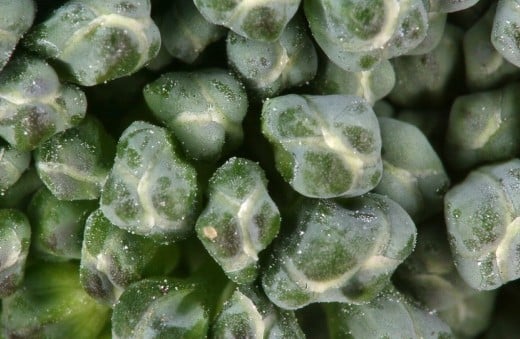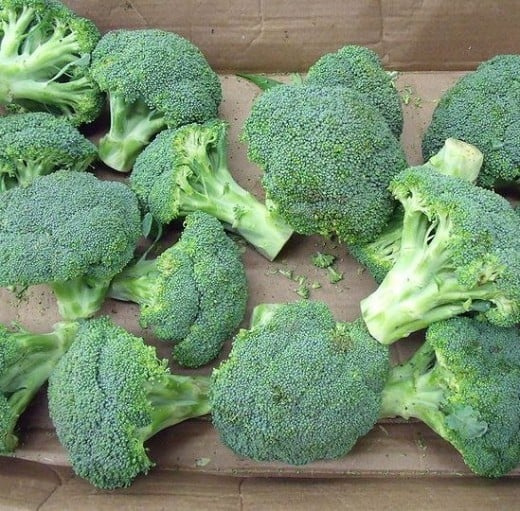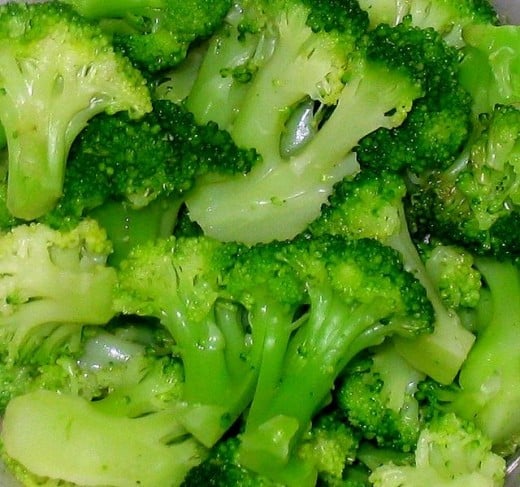What are the Benefits of Broccoli
Where did Broccoli Originate
Broccoli has been cultivated from a wild cabbage for at least the last 2,000 years. It is an "old world" plant. It's scientific name is Brassica oleracea and it is closely related to Cauliflower. It was a very popular food plant during the Roman Empire, a period that began after 15 CE.
The plant's popularity never waned from that time to this and broccoli was introduced to the western hemisphere by Italian immigrants to the United States.
Broccoli, by all rights, is the flowering part of the cabbage-like plant. The tightly packed buds and the stems those buds grow from are the part of the plant served and consumed in a wide variety of ways.
Broccoli Production
The vast majority of broccoli grown for world-wide consumption comes from China with eight million five hundred thousand tons. This is followed by India at five million tons and the United States at one million tons.


Nutritional Value of Broccoli
Broccoli is high in vitamin K, C, and A. It also contains calcium, iron, magnesium, phosphorus, potassium, zinc, and trace amounts of selenium.
A three and a half (3.5oz) ounce serving contains almost 7 grams of carbohydrates, 2 grams of simple sugar, 3 grams of fiber, 1/3 gram of fat, 3 grams of protein, and less than ten (10%) percent RDA of B1, B2, and B3.
It has been found that as long as broccoli is not boiled for more than ten minutes it retains most of it's nutrients. Steaming avoids this problem and I highly recommend it.
Some studies suggest that a high intake of broccoli can reduce the risk of prostate cancer and heart disease.
Health Benefits of Broccoli
Skin Repair
Broccoli contains the compound glucoraphanin, which is metabolised in the human body into the anti-cancer compound sulforaphane. This compound can be found in the sprouts of a germinating seed. Indeed it seems broccoli has more of this compound than any other plant.
In a double blind study rodents were exposed to UV rays (the dangerous wavelength in sunlight) for an equivalent of twenty weeks of daylong, by the beach exposure. None of the mice were treated with any sunblock or other inhibitors during that period. By the end of the twenty weeks all the mice showed signs of melanoma.
At the end of the twenty weeks the skins of half the group were treated with a placebo and the other half with a solution of sulforaphane. The mice treated with sulforaphane displayed a reduced effect to exposure.
What is significant about this study is that the sulforaphane seemed to mitigate the effects of UV exposure after the damage had already been done.
Sunblock
In another study, involving both mice and humans, the sulforaphane was ingested rather than topically applied. Researchers discovered that the sulforaphane in broccoli helped the skin produce certain enzymes which produced a sunblock effect.
Interestingly these enzymes were long lived and continued to work on and within the skin to reduce the redness associated with long term UV exposure.
Antioxidant
Sulforaphane has also been found to be a highly effective antioxidant helping to reduce arterial plaques both during their formation and reducing the size of those plaques after formation.
Sulforophane has also been found to reduce retinal damage and degeneration, thus reducing the effects if aging on vision.
Finally, sulforophane has been found to be very helpful in reducing the chances of developing aggressive prostate cancer by promoting the production of Phase 2 enzymes.
Broccoli, quite literally, is good for you.
Preparing Broccoli
Both the stem and florette can be eaten.
For the tougher stalk (often discarded needlessly) a frugal chef can use a paring knife to peel away the tough outer skin.
It will peel off simply by pressing the knife just between the skin and inner area, grasping the skin between the knife blade and thumb, and pulling the skin up toward the flowering head. All the toughest skin can be removed this way and the remaining vegetable will cook to a nice texture.
In my personal opinion broccoli should never be boiled, but instead steamed. This will reduce the amount of nutrients "washed away" in the cook water to a bare minimum.
Cooked broccoli will take on a bright green hue when done.



Growing Broccoli
Broccoli does best in cooler climates or early spring. It is not a hot weather crop. The ideal temperature range is 18 to 23 degree Celsius or 64 to 73 °Fahrenheit.
When growing broccoli look for a cluster of tiny flower buds in the center of the stalk. Since they haven't flowered yet the buds should be green. If the buds have blossomed you'll see yellow meaning it's too late to harvest your broccoli. (see picture two above)


Cooking Broccoli
As stated above my opinion is the that the best way to prepare broccoli is to steam it. This typically takes no more than five to seven minutes, gives the vegetable a bright green hue, and insures that the vitamins and minerals found in broccoli stay within.
Broccoli can most certainly be boiled, roasted, fried, sauteed, and grilled. With each cooking method times change slightly. Since it can even be eaten raw these times are not vitally important unless texture is the primary consideration.
Cooking times can range anywhere from three minutes, for boiling, to twenty minutes for roasting.
Less than Ususal Broccoli Recipes
Watercress and Broccoli Salad
Ingredients
- 4 Cups broccoli florets or about a pound and a half
- 1/4 Cup red wine vinegar
- 1/4 Cup honey (warm in microwave for easy dispensing)
- 1 garlic clove, minced
- 3/4 Cup thinly sliced red onion
- 6 Tablespoons dried sweetened cranberries
- 5 Cups watercress, sans the thick stems
Directions
- Steam broccoli until bright green and slightly crisp; about four minutes.
- Let broccoli cool while waiting on step six.
- Whisk vinegar, honey, and garlic in large bowl to blend.
- Season to taste with salt and pepper.
- Add red onion and cranberries to
dressing.
- Let stand until onion softens slightly, about 30 minutes.
- Add broccoli and watercress to onion mixture and toss to
coat.
- Sprinkle with pepper.
What makes this recipe so healthy is the reduced cooking time on the broccoli and the fact that it's steamed.
Szechuan Broccoli
Ingredients
- 5 Cups broccoli florets
- 2 Cloves garlic, crushed
- 1 Tablespoon soy sauce
- 1 Tablespoon rice wine vinegar
- 1/2 teaspoon sugar
- 1 Tablespoon sesame seeds
- 2 teaspoons light vegetable oil
- 1/2 teaspoon red pepper flakes
- 1/2 teaspoon grated ginger
Directions
- Combine soy sauce, rice wine and sugar in small bowl and set aside.
- Heat a skillet to medium high heat.
- Sprinkle in sesame seeds. Cook, stirring, for one minute to
toast seeds.
- Remove the sesame and set aside.
- Heat a wok (or skillet) and allow it to get very hot. From this point on you should work quickly.
- Swirl in oil to distribute around pan.
- Put in red pepper flakes,
ginger and garlic.
- Stir for for 30 seconds; no more.
- Add broccoli and stir for 1
minute.
- Add soy mixture (from step 1) and stir again.
- Reduce heat and cover and cook
for 2 minutes. (you are essentially steaming at this point)
- Remove from heat, sprinkle with sesame seeds and serve.

